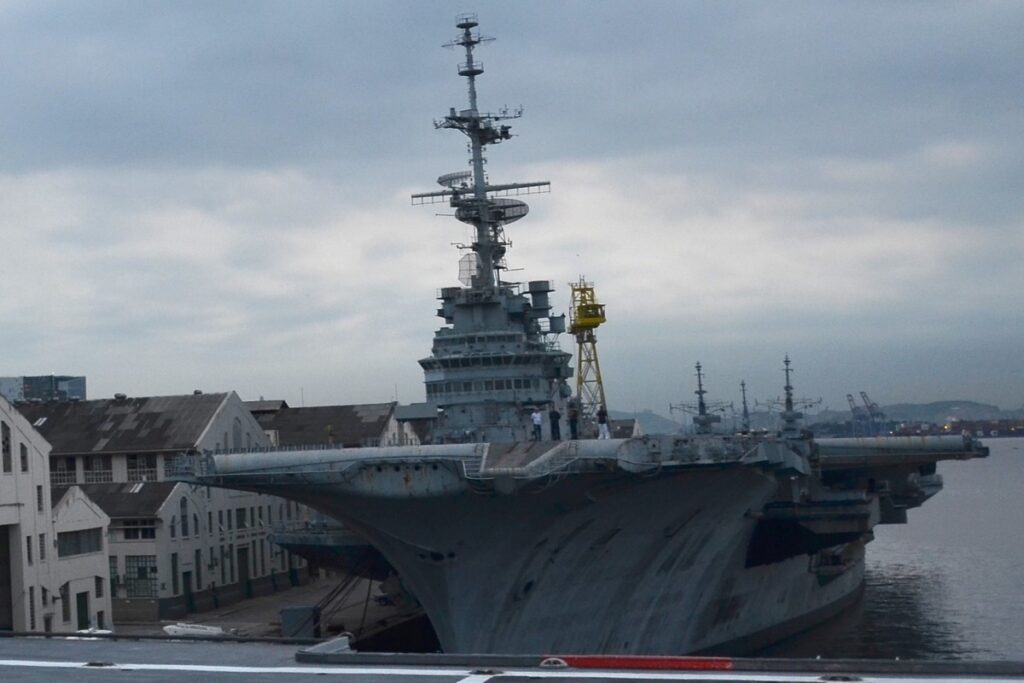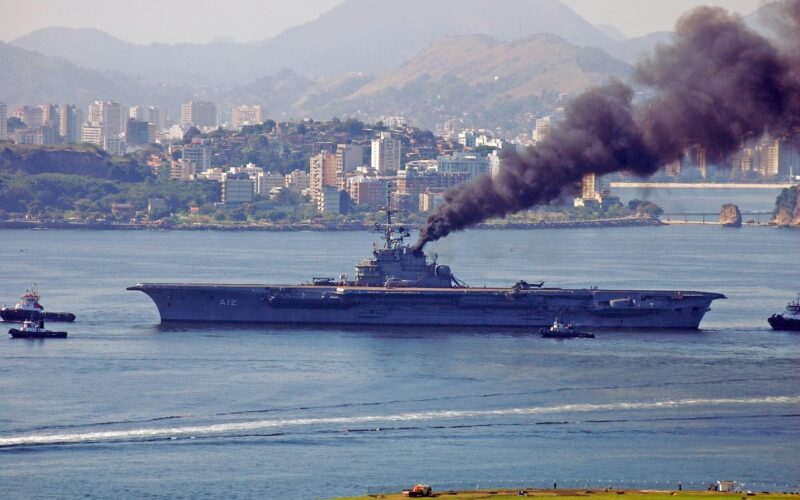The Brazilian Navy could be planning to sink its aircraft carrier Sao Paulo and the hazardous materials it contains despite protests from the country’s environment minister.
The fate of the warship had been in limbo since September 8, 2022, when it returned to Brazil after an aborted trip to Turkey, where it had to be scrapped.
On January 13, 2022, a new inspection of the Sao Paulo found a new breach and an increase in corrosion and flooding compared to the last examination carried out four months prior.
The Brazilian military is now considering a controlled sinking of the 266-meter-long aircraft carrier off the coast of Brazil, as reported by the local daily newspaper Folha de São Paulo. The Sao Paulo is currently off Suape Port, in the eastern Brazilian state of Pernambuco. It was banned from docking in the harbor by a court order.
Though the decision rests in the hands of the Navy, Brazil’s Minister of the Environment Marina Silva has voiced her concern regarding the potential environmental damage.
What happened?
The NAe A-12 Sao Paulo started its life as the Foch, a French Clemenceau-class aircraft carrier, built in the late 1950s and commissioned in 1963. The ship operated a carrier wing of 40 fighters (Dassault Etendard and then Super-Etendard).
In 2000, it was sold to Brazil for €12 million, serving as the flagship of the Marinha do Brasil (the Brazilian Navy) with a flotilla of 22 A-4 Skyhawk fighters.
In 2017, it was retired from service, and decommissioned a year later. In 2021, the carrier was sold to be scrapped to the Turkish demolition yard SÖK Denizcilik.
Its journey began on August 4, 2022, when the aircraft carrier left Rio de Janeiro towed by the Dutch tugboat Alp Centre. It was bound for the shipyard in Aliağa, on Turkey’s western coast, where it was to be dismantled.
However, on August 26, 2022, as the ship and its tugboat were off the Moroccan coast and preparing to enter the Mediterranean Sea through Gibraltar, the convoy stopped.
In an official statement, the Turkish Ministry of Environment Murat Kurum said the entry of the aircraft carrier into the country’s waters was suspended, conditioned upon a new hazardous materials inventory report.
An initial Inventory of Hazardous Materials (IHM) transmitted by Brazil to Turkey was judged to be dubious, with major differences in the quantity of identified hazardous materials compared to ships of the same class and period.

What does the NAe Sao Paulo contain?
In their inventory, the Brazilian authorities only reported 9.6 tons of asbestos. Yet the Clemenceau, the Foch’s sister ship, contained at least 600 tons of this cancerous material formerly used for fireproofing and soundproofing.
The Brazilian Navy claims that a portion of the asbestos was removed when the Foch was still in service with the French Navy.
“In the 1990s, the French Navy carried out an extensive removal from the compartments of propulsion, catapult, auxiliary machinery and diesel generators, culminating in the removal of approximately 55 tonnes of asbestos,” the Marinha do Brasil said in an emailed statement to AeroTime when the ship was immobilized in September 2022. “Additionally, it is relevant to mention that the asbestos currently existing in the former NAe Sao Paulo does not offer health risks, in the state in which it is found.”
In addition to the asbestos, the NGO Ban Abestos France noted that the Foch was involved in securing the French atmospheric nuclear tests in the Pacific Ocean in the 1960s.
“The presence of 170 tonnes of lead/cadmium paint that could retain radioactive contamination, as well as the lack of information on the prior removal of radioactive equipment, raise fears that the ship is contaminated despite claims of the contrary,” the NGO wrote in a statement.
Finally, the initial survey did not detect PCBs, a material commonly used in insulation in the 1950s before it was internationally banned in the 1970s for being highly carcinogenic. There again, 165 tons of PCBs were found in the Clemenceau.

